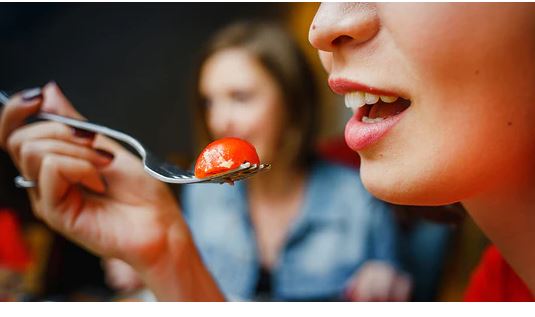Have you ever wondered why only hummingbirds sip nectar from feeders?
Unlike sparrows, finches and most other birds, hummingbirds can taste sweetness because they carry the genetic instructions necessary to detect sugar molecules.Like hummingbirds, we humans can sense sugar because our DNA contains gene sequences coding for the molecular detectors that allow us to detect sweetness.But it is more complex than that. Our ability to sense sweetness, as well as other tastes, involves a delicate dance between our genetic makeup and the foods we encounter from the womb to the dinner table.Neuroscientists like me are working to decipher how this intricate interplay between genes and diet shapes taste.
The role of genes in sensing taste
As with hummingbirds, the human ability to discern what food tastes like depends on the presence of taste receptors.These molecular detectors are found on the sensory cells, which are housed inside the taste buds, the sensory organs on the surface of the tongue.The interactions between taste receptors and food molecules give rise to the five basic taste qualities: sweetness, savoriness, bitterness, saltiness and sourness, which are transmitted from the mouth to the brain via specific nerves.
Taste qualities signaling the presence of essential nutrients and energy, like salt and sugar, send information to brain areas linked to pleasure. Conversely, tastes that alert us to potentially harmful substances, such as the bitterness of certain toxins, are connected to those that make us feel discomfort or pain.While the presence of genes encoding for functional taste receptors in our DNA allows us to detect food molecules, how we respond to these also depends on the unique combination of taste genes we carry. Like ice cream, genes, including those for taste receptors, come in different flavours.However, whether and how these genetic differences affect our taste and eating habits is still being worked out. What is certain is that while genetics lays the groundwork for taste sensations and preferences, experiences with food can profoundly reshape them.
How diet influences taste
Many of our innate sensations and preferences are molded by our early experiences with food, sometimes before we’re even born.Some molecules from the mother’s diet, like garlic or carrots, reach the fetus’s developing taste buds via the amniotic fluid and can affect the appreciation of these foods after birth.
The effect of food on our taste predispositions doesn’t stop in early life: What we eat as adults, especially our sugar and salt intake, can also shape how we perceive and potentially choose food.Cutting down on sodium in our diet decreases our preferred level of saltiness, whereas consuming more makes us like saltier foods.Something similar occurs with sugar: Reduce sugar in your diet and you may find food sweeter.Researchers have found that about 40 per cent of people infected with SARS-CoV-2 experience impairment in taste and smell. In about 5 per cent of those people, these taste deficits persist for months and years.
Although researchers don’t understand what causes these sensory alterations, the leading hypothesis is that the virus infects the cells that support the taste and smell receptors.
Training taste buds for healthier eating
By shaping our eating habits, the intricate dance between genes, diet, disease and taste can affect the risk for chronic diseases.Beyond distinguishing food from toxins, the brain uses taste signals as a proxy to estimate the filling power of foods. In nature, the stronger a food tastes – in terms of sweetness or saltiness – is directly connected to its nutrient levels and calorie content.And indeed, in recent studies in invertebrate animal models, our lab discovered that the changes in taste caused by high dietary sugar intake drove higher eating by impairing these food predictions.
But there is a silver lining to the adaptable nature of taste. Since diet shapes our senses, we can actually train our taste buds – and our brains – to respond and prefer foods with lower quantities of sugar and salt.Interestingly, many people already say that they find foods overly sweet, which may not be surprising since between 60 per cent to 70 per cent of grocery store foods contain added sugar





